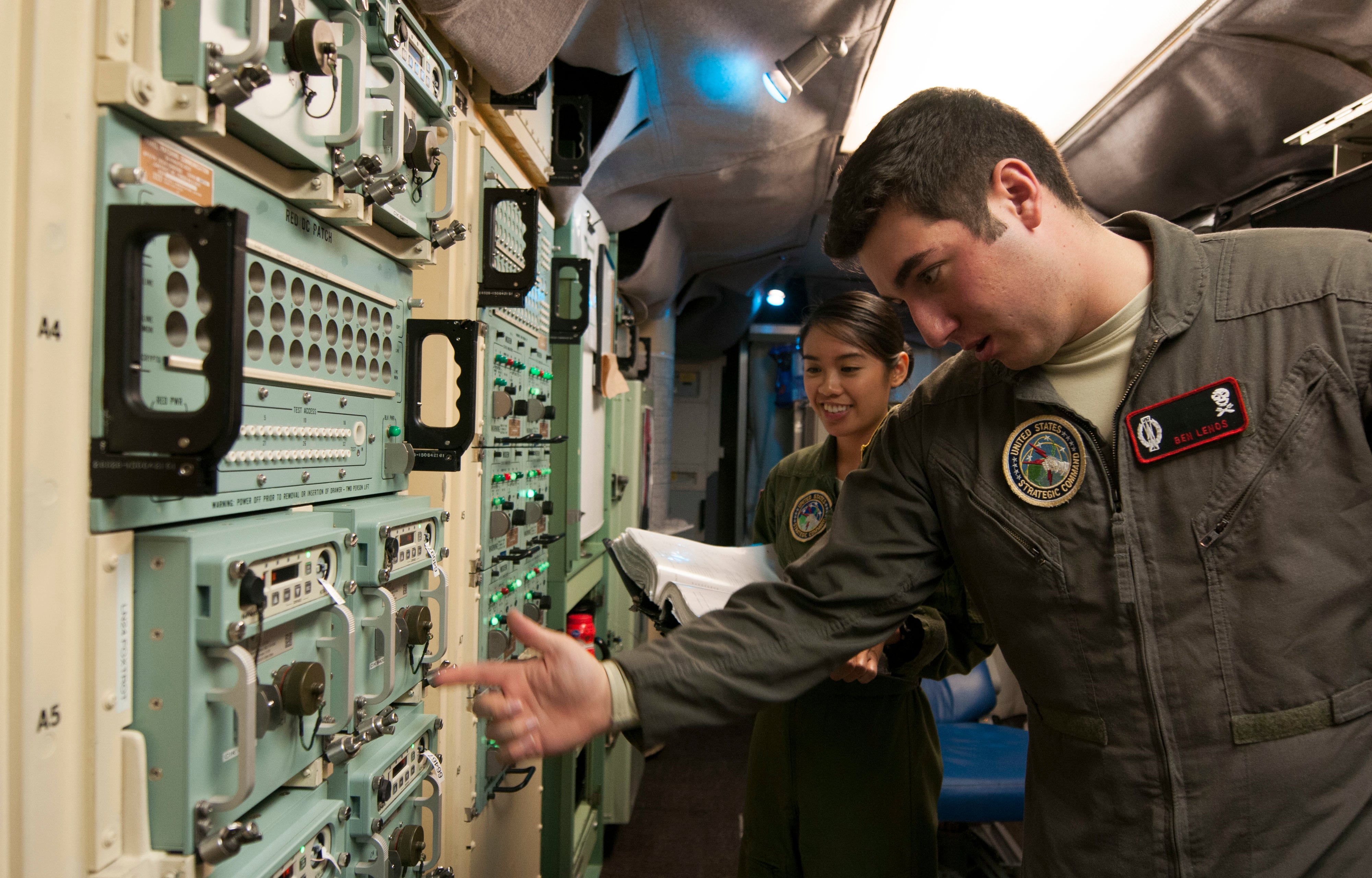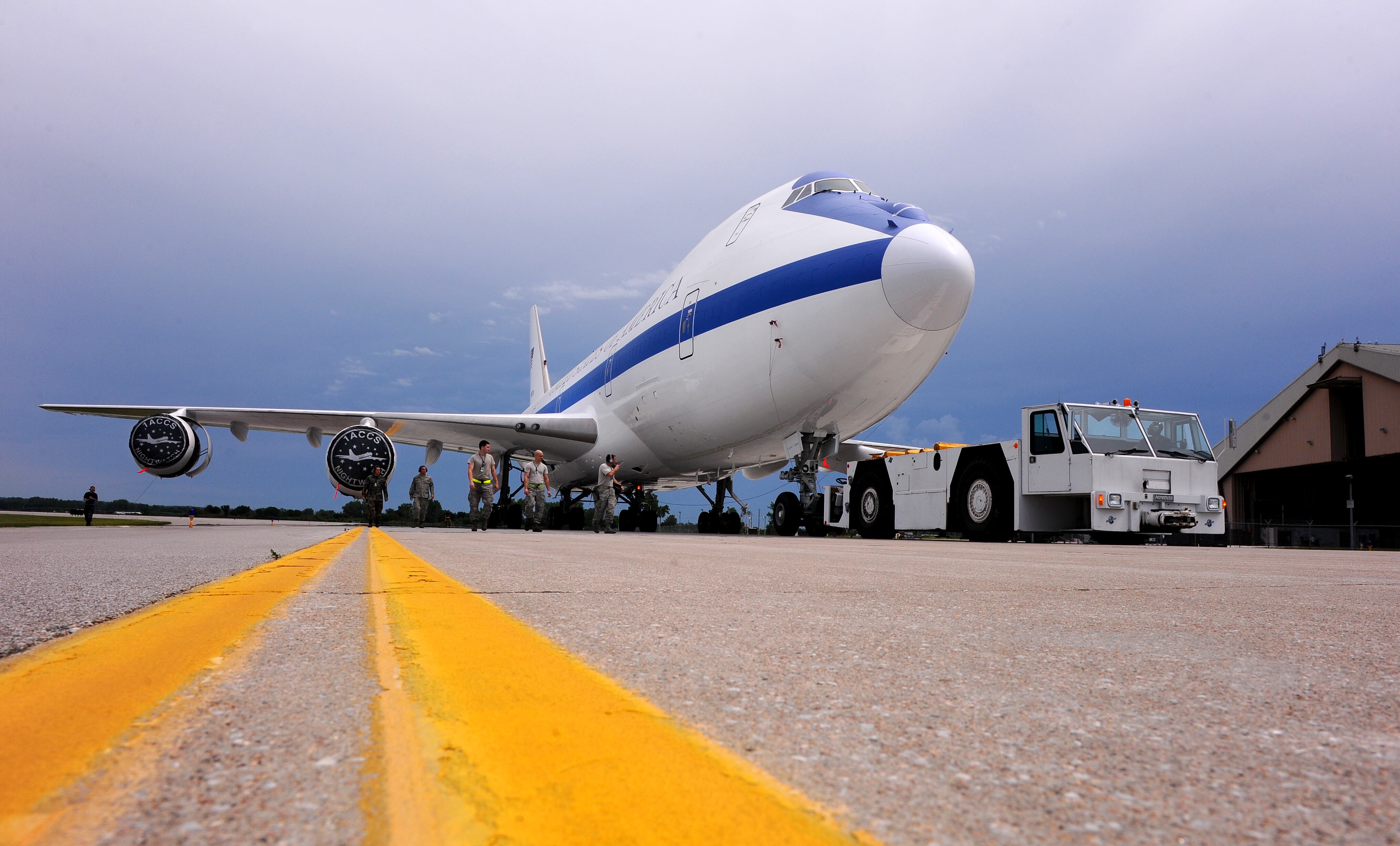WASHINGTON — Next month, the Air Force is expected to get a new training system for its airborne ICBM command post after the older system was damaged in devastating floods in 2019.
Offutt Air Force Base, located near Omaha, Neb., is set to receive a shipment for a virtual Airborne Launch Control System trainer in April, said Lt. Col. Matthew Hlivko, commander of the 625th Strategic Operations Squadron.
The ALCS is an incredibly unique nuclear weapons system that provides the U.S. military a way to launch intercontinental ballistic missiles from an aircraft, giving the Pentagon another option if launch control centers on the ground are destroyed. The ALCS is operated by Air Force personnel onboard a Navy E-6B Mercury, and only 16 of those Boeing 707-based planes are operational.
“The new virtual system will create a better training environment for students and will include improved hardware, software, 3D graphic displays and higher fidelity touch panels,” said Hlivko, whose 625th STOS is responsible for the operation of the Airborne Launch Control System.
RELATED

The new training system is made by Northrop Grumman.
Last March, floodwaters from the Missouri River and Papio Creek rose and spilled into Offutt, leaving much of the base underwater and damaging aircraft simulators, hangars and upwards of 50 buildings.
For the 625th STOS, “the biggest thing we lost was our simulator,” Col. Hayley James, deputy group commander for the 595th Command and Control Group, told Defense News during an October trip to Offutt. To keep up their skills over the past year, the squadron has had to fly across the country to Vandenburg AFB for contractor-provided training.
When James spoke with Defense News, the Air Force was still deciding whether it would eventually buy a full tactile trainer, which has physical buttons, switches and keys that exactly replicate those on the system, giving a more immersive experience.
"The Air Force wants to do more [with] virtual capabilities just because there is an expense piece tied to it,” she said. “I think the idea is that in the next 18 months to two years they'll bring on the full training solution. We don't know what that's going to look like but my guess is it will be a combination of tactile and virtual training. It probably will not look the same as what we had before."
The Air Force will eventually buy a full tactile ALCS trainer but remains in the early stages of the process, Eighth Air Force spokesman Justin Oakes said in a statement. There is no current estimate for when the trainer will be delivered or deployed.
Missileers who are learning to use the ALCS go through a six to eight week initial qualification training that involves both simulator training and training aboard the E-6.
The squadron has already conducted two initial qualifying classes using the new simulator at Vandenberg Air Force Base, California. The next qualifying class is scheduled to be held at Offutt AFB in early May once the new virtual trainer has been delivered and installed, Hlivko said.
RELATED

But aside from simulator training, the squadron has multiple ways to keep up readiness.
Missile crews get training time during monthly E-6 training rides, which cover the full gamut of ICBM operations. Those rides are "very vocal, very loud, very fast paced,” Hlivko said. “You're taking [the mission] with another crew member, so there's a lot of crew coordination with one person taking action, on person vocalizing what those actions should be."
Because the Air Force and Navy maintain an E-6 and ALCS on 24 hour alert, meaning that they are ready to take off at any moment in order to execute a mission, the missile crews also take turns standing alert for weeklong periods.
“We are the survivable portion of the ICBM of the triad. We always have an operational Airborne Launch Control System that is ready to go and execute that mission at all times,” said Capt. Blake Friend, an ALCS planner. “We’re always tethered to the plane and ready to fly away at any second.”
Valerie Insinna is Defense News' air warfare reporter. She previously worked the Navy/congressional beats for Defense Daily, which followed almost three years as a staff writer for National Defense Magazine. Prior to that, she worked as an editorial assistant for the Tokyo Shimbun’s Washington bureau.








